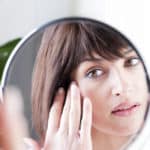Treating Acne Scars
Acne is a troublesome, sometimes depressing and debilitating condition for both teens and adults. 80% of teens and people in their 20s experience acne issues, and 40% of these acne-sufferers wind up with unsightly scarring, and 5% of older adults with acne issues also struggle with their unsightly acne scars. In some cases, the resulting dark spots, pitted scars and raised scars can be so upsetting that people avoid social situations, refuse to go on dates and experience such loss of self-confidence that their careers suffer. They might not even be as willing to participate in their kids’ school events and family get-togethers. With their unsightly, or what they may call ‘hideous’, scarring, their quality of life is sadly diminished.
If you’re unhappy with acne scars on your face, back, arms or other body parts, it’s entirely likely that your dermatologist has the ideal solution for you, with the skill, science and medications that can render those acne scars invisible, or very nearly so.
While over-the-counter scar fade creams may work on some subtle marks, many people choose to seek the advice and treatment of a qualified dermatologist with higher-quality methods and skills to make those acne scars a thing of the past. Scar removal is not a do-it-yourself job, since some at-home scar removal kits and self-done dermabrasion machines can cause even worse results, injury and additional scars.
So when you do consult with your dermatologist, you’ll get an expert, trained eye assessing each of your skin’s marks, since not all acne scars are alike. There are, in fact, many different kinds of scars left behind by a case of acne. Some are concave, some are raised, some are dark spots, and some red spots aren’t scars at all, but are in fact inflammations requiring a topical medicine that can heal the spots and prevent scars from forming.
Your doctor will explain the difference between the various acne scar types, such as Icepick scars that look like the skin has been punctured with an ice pick, Boxcar scars that are round to oval depressions in the skin, and Rolling scars that give the skin an undulating look created by scarred fibrous bands beneath the skin’s surface. Only your dermatologist can see each scar’s type and especially the shape of the scar inside any depressions using high-powered viewing tools, so best assess your treatment options.
These may include one or more treatment types to solve each of your acne scar effects. Your doctor may decide that indented scars can be eliminated with the simple injection of dermal fillers, such as HA fillers, collagen or other fillers to give your scars a temporary elimination that usually has to be re-treated to keep your smooth, scar-free look going.
Laser resurfacing may be called for, with the top layers of the skin carefully and finely-removed by a laser treatment of the doctor’s choice, so that when the skin heals in the treated areas you have the effect of newer, smoother skin. Microdermabrasion or dermabrasion can slough off layers of the affected skin to reveal new, fresh, spot-free skin after treatment and healing. Injections of corticosteroids can soften and flatten raised scars, and cryotherapy may be selected to freeze off scar tissue (this method is sometimes paired with corticosteroid injections for a double-barrel treatment that may be more effective.)
Topical ointments, such as medicines containing prescribed retinol or glycolic acid which plumps up the skin and helps the body create more natural collagen to fill out acne marks, and prescription fade creams may be your doctor’s choice for lesser dark spots. Chemical peels may also be your dermatologist’s best choice for your skin’s unique challenges, and more in-depth surgical options may be your best course of action for more dramatic acne scar marks and raised surfaces. Your dermatologist will know upon looking at your acne patterns and where they exist on your body which methods are best for you.
Of course, it’s essential that your doctor treat any ongoing acne condition you have, since scar treatment has to wait until active acne issues are brought under control, so that you’re fixing the flaws on skin that isn’t producing new acne every day.
Each type of acne scar treatment does come with its own collection of pre- and post-treatment requirements, and some may call for more extensive post-care such as icing, applying bandages and ointments, but for those millions of acne sufferers who deplore the sight of their dark marks, divots and raised bumps, that’s a very small price to pay to be without acne marks now and perhaps forever onward. With those ‘heinous’ marks gone, their confidence goes up, their quality of life improves, and even their wardrobe choices improve since they no longer need to avoid stylish, skin-baring clothing or bathing suits.
Talk with your doctor about your own particular acne scars, and about the best treatments for them, so that you can finally love every inch of your skin, and perhaps show it more in your new and improved life.





